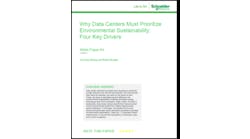In a new special report from CoreSite and Data Center Frontier, we take a look at how colocation can be the “nervous system” of today’s modern digital businesses. The second entry in this special report series work to dispel common colocation myths and perceptions around topics like customer control, availability guarantees, performance penalties and more.
Download the full report. (Report Cover Image: Kkssr/Shutterstock)
Colocation myths
Because colocation has evolved rapidly in a constantly shifting landscape, many myths have developed about the quality and reliability of colocation services as well as the level of control customers retain. But the reality is that cloud infrastructure and colocation not only have a lot in common but complement each other.
There are five common misperceptions about colocation in particular.
Perception #1
The customer has little or no control over infrastructure.
Fact: Customers own the equipment they place in a colocation center and have access to it 24 hours a day. The provider is responsible for providing power, network and cooling infrastructure and often offers availability service level agreements for customers who value that peace of mind. The provider doesn’t manage customer workloads and has zero visibility into the programs they run. While the responsibility is on the customer to maintain software and balance workloads, the same would be true in an on-premises data center.
Customers in regulated industries, in particular, value having that level of security and control. In the meantime, sharing the costs of power, floor space and common infrastructure such as backup provides economies of scale that save customers money. Small companies can enjoy the same robust data center features as giant enterprises.
Perception #2
Equipment is less secure when moved off site.
Fact: The opposite is true; only the largest enterprises come close to matching the security features of colocation facilities. Physical security controls typically include security cameras, biometric authentication, double door “mantrap” entry and locked cages and cabinets. Employees at the leading colocation providers are trained in best-in-class security procedures, must pass certification exams and receive rigorous ongoing training. Security systems and protocols are tested regularly, and facilities comply with leading standards such as ISO 27001, SOC HIPAA and PCI DSS. Maintaining such a high level of security is all but unaffordable for most customers.
Perception #3
There are no availability guarantees in a colocation arrangement.
Fact: Any reputable colocation provider offers service level agreements that guarantee availability levels and provide penalties if they aren’t met. But fulfilling SLAs is rarely a problem. Leading colocation facilities employ a full suite of high-availability technology like redundant power supplies, backup generators, fire suppression systems, disaster recovery facilities and highly available multi-region cloud architectures. Few customers can afford to install and maintain such complete protections on their own premises. This enables CoreSite, for example, to offer a 100% uptime SLA.
Because colocation has evolved rapidly in a constantly shifting landscape, many myths have developed about the quality and reliability of colocation services as well as the level of control customers retain.
Perception #4
Colocation extracts a performance penalty because equipment is offsite.
Fact: Performance is usually better than that of equipment housed on-premises because colocation providers use state-of-the-art server racks and cooling equipment. The performance benefit is particularly pronounced when cloud connectivity is required because colocation centers maintain high-speed and dedicated connections to cloud on-ramps that are much faster than public Internet connections.
Perception #5
Colocation is expensive.
Fact: Most customers save money compared to buying and maintaining their equipment on premises. That doesn’t include the intangible benefits of having access to faster bandwidth, better security controls, superior data protection, experienced staff and other byproducts of the economics of the multi-tenant model.
Catch up on the first entry in this special report series that explores real-time business, data centers and the colocation solution.
And stay tuned. This special report from CoreSite and Data Center Frontier will also explore the following topics over the next two weeks.
- Colo business and technical drivers
- Understanding interconnection + why/when to use a colocation provider
Download the full report,How Colocation Can Be the Nervous System of Digital Business, courtesy of CoreSite and Data Center Frontier, that explores how colocation might just be the answer to remain competitive in today’s markets.





